How To Make Golden Syrup
This post may contain affiliate links. See my disclosure policy.
If you have a recipe that calls for Golden Syrup and you don’t have it, there’s no need to rush to the store or special order it – this tutorial will show you how to make golden syrup right in your kitchen! Just 3 ingredients, 99% hands off, and it keeps for months!
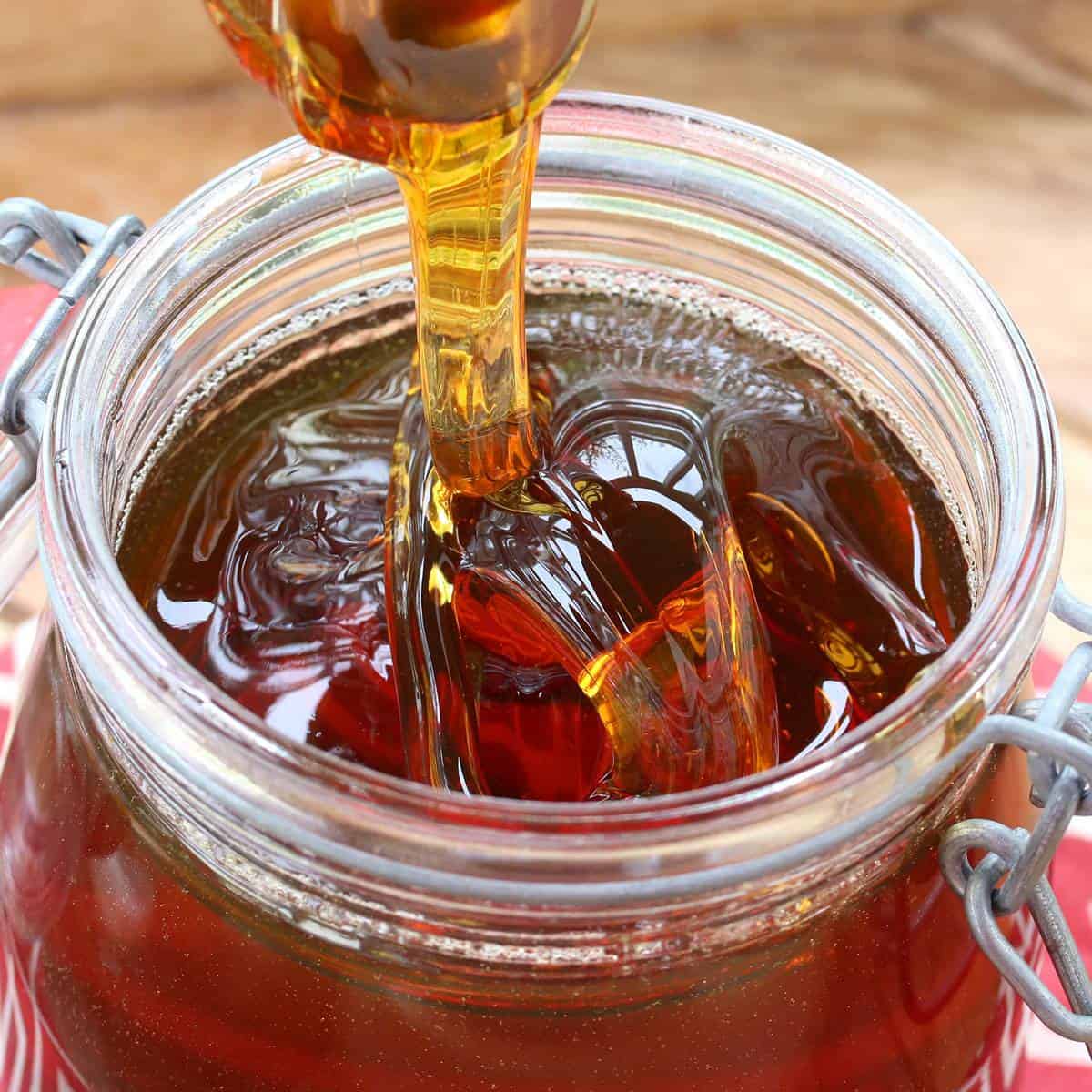
What Is Golden Syrup?
Golden Syrup is something you may not have heard of unless you’re into British baking. But it’s an indispensable ingredient when it comes to making a number of traditional British recipes. And its versatility extends far beyond that (ideas on ways to use it below). Golden syrup (also known as light treacle) is a thick amber-colored inverted sugar syrup comprised of sugar, water and citric acid. It has a deep caramelized, buttery flavor and has been a kitchen staple in Great Britain for over a century. It’s also popular in Australia and New Zealand.
You’ve probably see the the iconic green and gold cans of Lyle’s Golden Syrup. In 2006 it made history when it was entered into the Guinness World Book of Records for having the world’s oldest branding and packaging. The design and appearance of the cans have remained consistent for nearly 140 years.
This syrup is very thick (significantly thicker than corn syrup) and drizzles slowly. In more recent years Lyle’s has also made their product available in squeeze bottles for convenience to use at the table.
Golden Syrup vs. Corn Syrup
They are not the same: the ingredients, the process, the flavor and the texture are different. Golden syrup is made from sugar whereas corn syrup is made from corn and they are made using different processes. Corn syrup (whether light or dark) isn’t as thick and basically tastes like thick sugar water, lacking any depth of flavor (many people, including myself, think its cloyingly, sickly sweet). In contrast, golden syrup is thicker and has very deep caramelized, buttery, and complex flavor notes. There is no equivalent in the U.S. and substituting corn syrup will not yield the same flavor results.
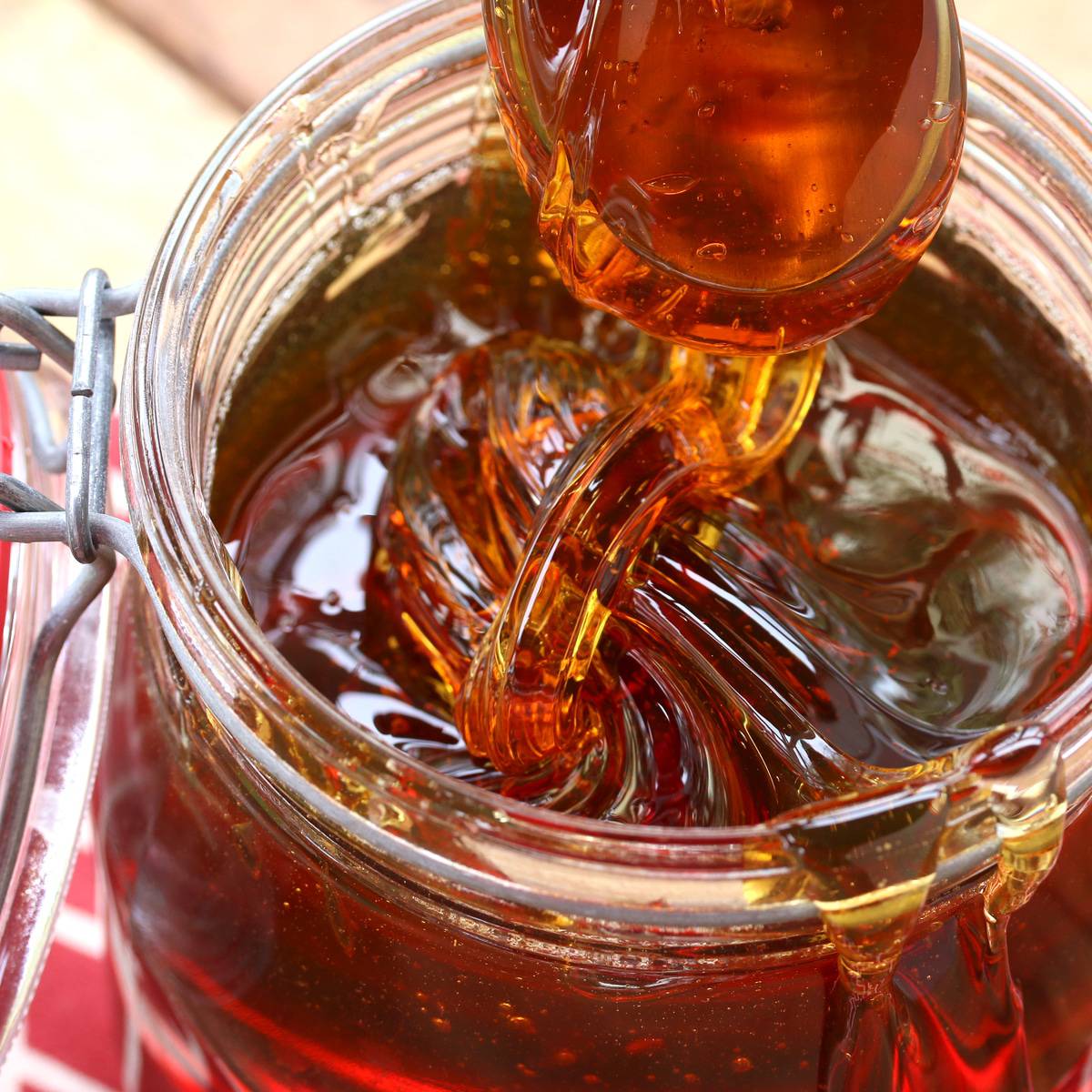
How Do You Use Golden Syrup?
Golden syrup is very versatile and historically has been used in both sweet and savory applications though today it’s mostly used in baking and desserts. Anything that calls for corn syrup can be substituted with golden syrup for a far superior flavor. (As one example, try it in your next pecan pie to take it to a new flavor level!) You can use your homemade golden syrup as a substitute for any liquid sweetener. Here are a few ways you can use it:
- Cookies/Biscuits (ANZAC Biscuits from Australia/New Zealand are a famous and delicious example)
- Fudge, Chocolates and Candies
- Ice Cream & Sorbets
- British Flapjacks
- Brandy Snaps
- Gingerbread (like my English Parkin)
- Treacle Tart and Treacle Pudding
- Butter Tarts
- Drizzled over pancakes, waffles, oatmeal and porridge
- Drizzled over fruit salads or yogurt
- In savory marinades for a touch of sweetness
- Used in place of simple syrup in drinks
- Baked Apples or Baked Pears
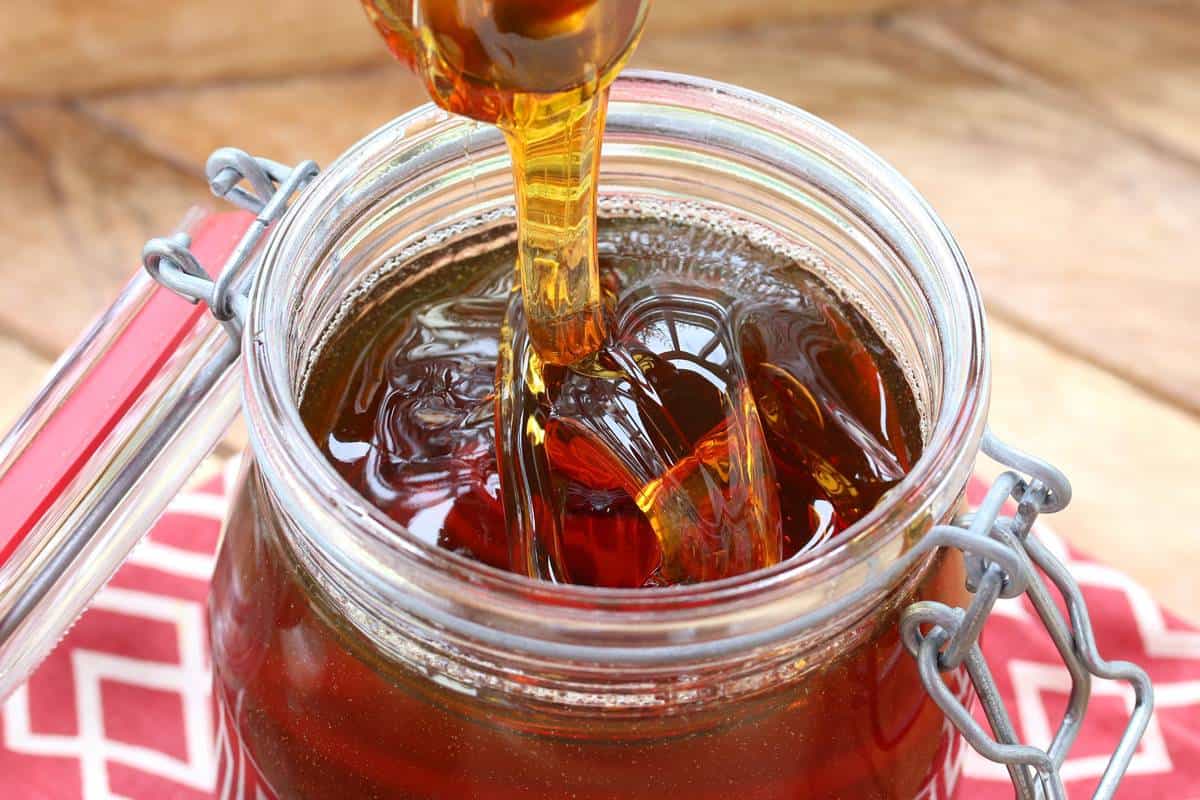
How To Make Golden Syrup
Let’s get started!
This homemade golden syrup recipe is extremely easy to make using just 3 ingredients and is 99% hands off. This recipe makes about 20 ounces (about 3 cups) and don’t worry if you think that’s more than you’ll need for a while because this stuff keeps for several months at room temperature. But if you prefer you can also half this recipe.
Put the sugar and water in a heavy-bottomed saucepan, stir to combine, and bring to a boil, stirring regularly to prevent burning, and stir very gently to avoid splashing the liquid up the sides of the saucepan. Gently stir in the lemon juice.
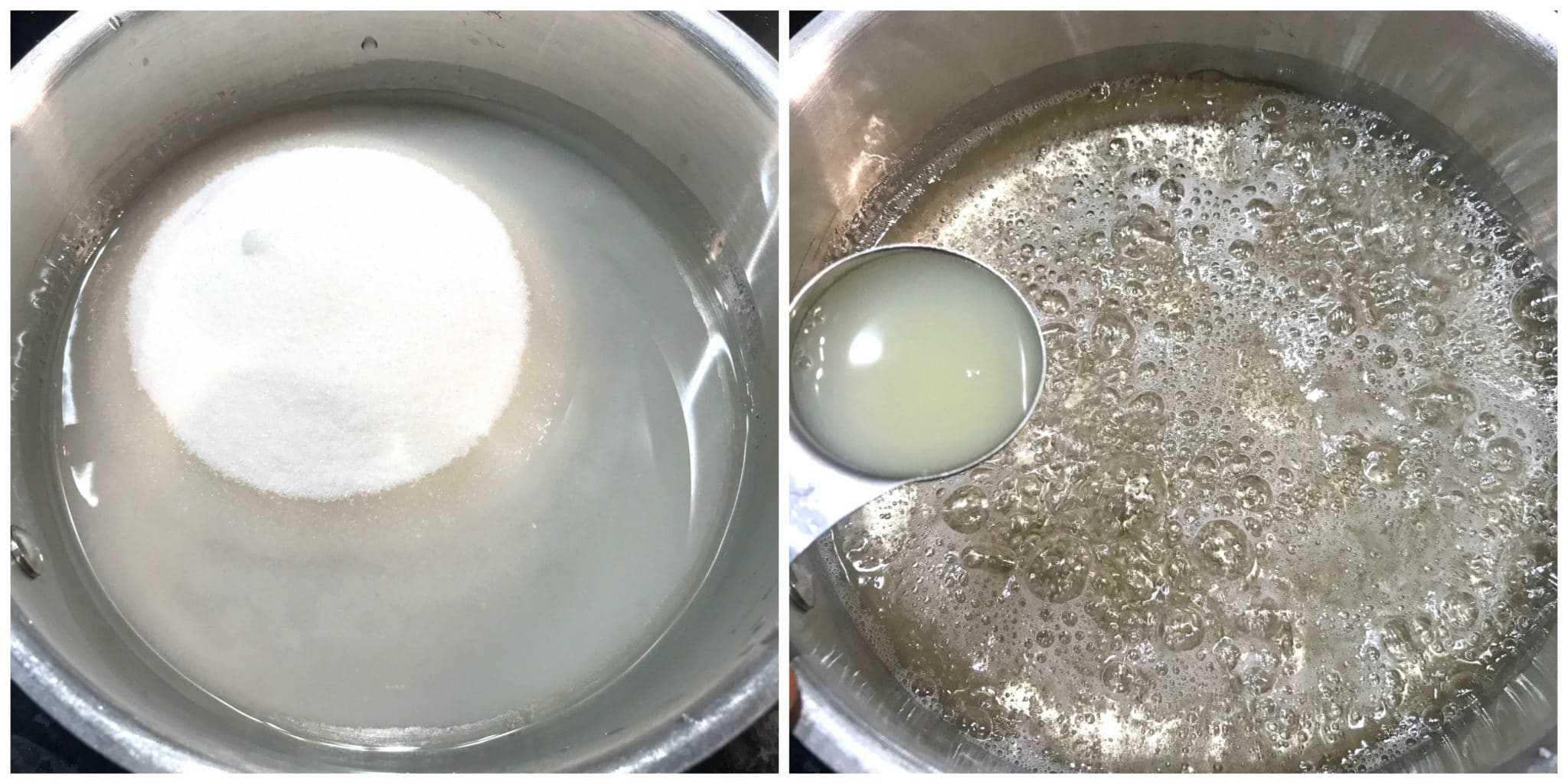
Reduce the heat to a VERY low and gentle simmer (I use “3” on my induction cooktop). Leave the saucepan uncovered. DO NOT STIR the syrup again.
Let it gently simmer until it is a rich amber color. This will take upwards of an hour. Do not increase the heat to rush the process – caramelizing sugar is a low and slow process.
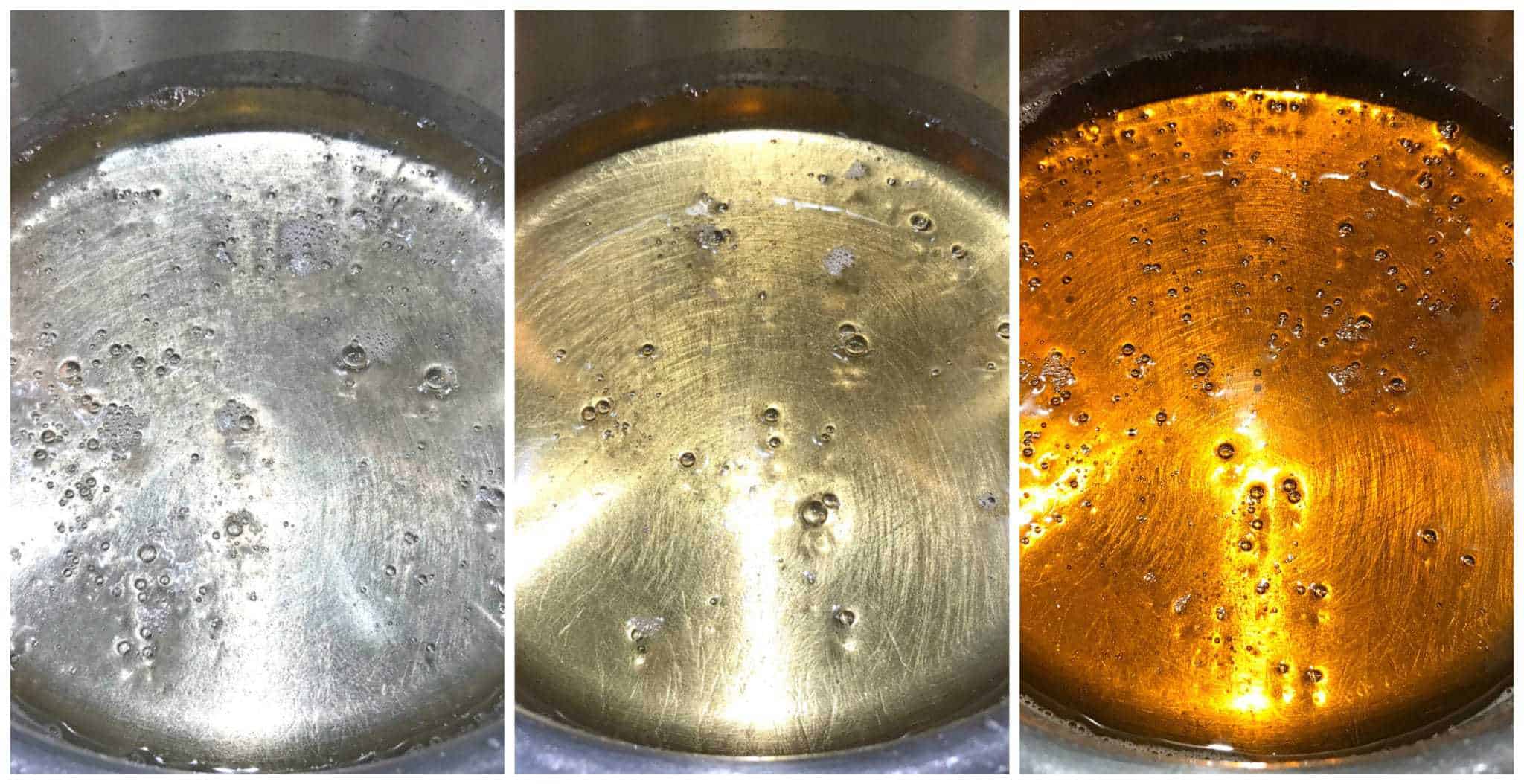
Once the syrup is a rich amber color turn off the heat, let it sit for a few minutes, then pour the hot syrup into a glass jar and let it cool completely before closing the jar with a secure lid.
Note: The syrup will be runny while it’s hot but will thicken as it cools.
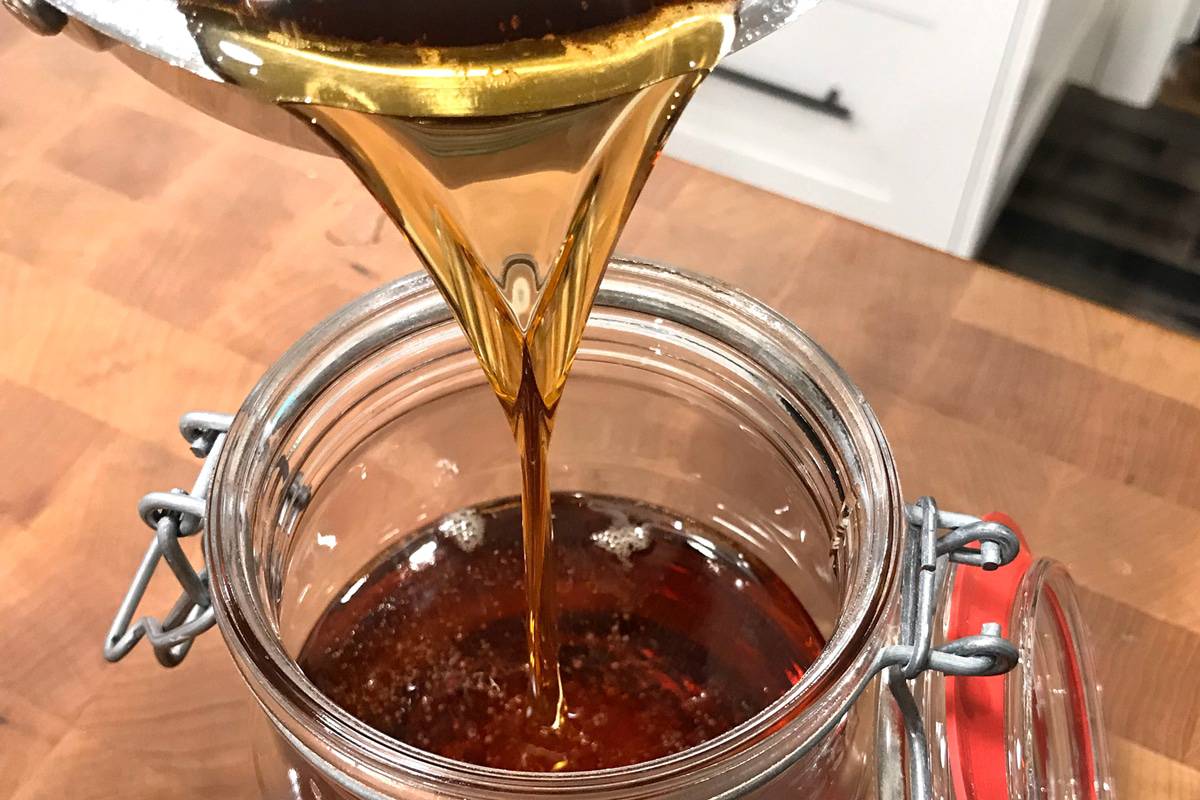
Store your syrup at room temperature in an airtight glass jar with a sealable lid. It will keep for many months.
Enjoy!
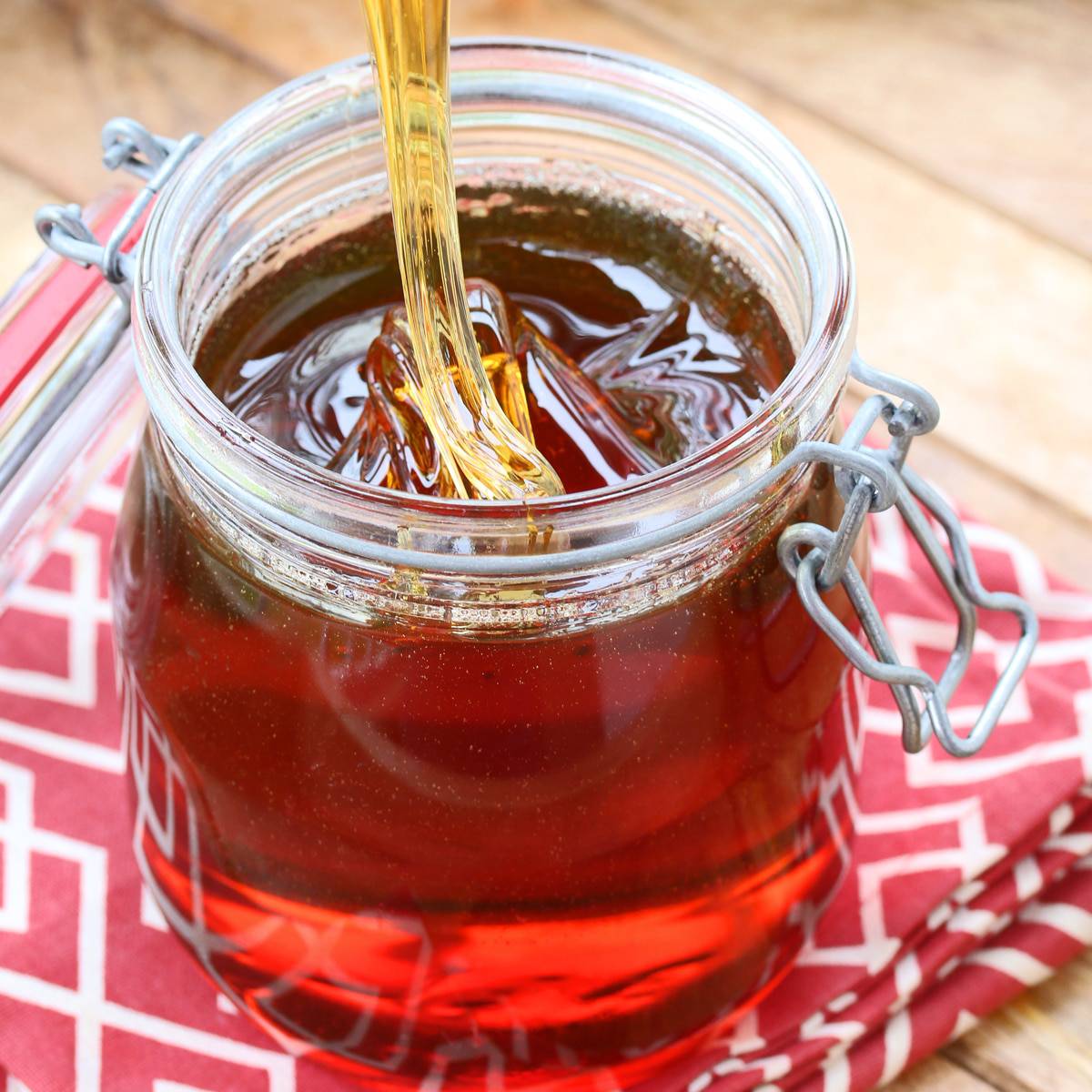
Save This Recipe
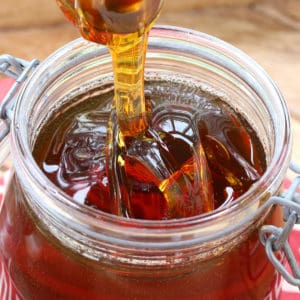
How To Make Golden Syrup
Ingredients
- 1 1/4 cups water (300 ml)
- 4 cups (800 g) cane sugar (for a deeper flavor you can substitute a little bit of brown sugar if desired but will need to use a digital thermometer *see Note)
- 2 tablespoons lemon juice (either fresh or bottled will work but fresh produces a better flavor)
- OR 1/2 teaspoon citric acid (this can be used instead of lemon juice if you wish to avoid a lemon flavor, however it tends to be slightly bitter)
Instructions
- Place the sugar and water in a saucepan and stir to combine. Bring it to a boil, stirring regularly to prevent burning until the sugar is dissolved. Stir very gently to prevent sugar water from splashing up the sides of the saucepan. Once boiling gently stir in the lemon juice or citric acid. Reduce the heat to a very low and gentle simmer (I use "3" on my induction cooktop but this will vary from cooktop to cooktop) Leave the saucepan uncovered. DO NOT STIR the syrup again. Let it simmer on very low for 40-60 minutes or longer until the sugar is a rich amber color. If you're using a thermometer the temperature should be about 240-250 degrees F.Note: If your syrup is too thick and stiff you can reheat it, adding a little bit of water. If your syrup is too runny then you need to let the syrup caramelize longer.
- Turn off the heat, let it sit for a few minutes, then pour the hot syrup into a glass jar and let it cool completely before closing the jar with tight sealing lid.Store your golden syrup at room temperature where it will keep for several months. This makes approximately 3 cups of golden syrup.



















Having reviewed bakers’ comments, I think, like Kelly, that cane sugar is probably essential in creating an authentic golden syrup. Indeed, like many Scottish sweets, e.g., Scottish Tablet, this golden syrup recipe looks like one that may have originally called for caster sugar, so I will create my own caster sugar using my food processor and see what that yields. Using caster sugar instead of granulated will result in the use of a different measured amount. Caster sugar is finer and thus 2 cups caster will weigh heavier than 2 cups granulated, so the sweetness factor will increase. Caster sugar more readily melts, which will lead to earlier caramelization and – hopefully – reduced risk of burning or scorching, the bitterness of which is quite terrible.
I don’t imagine golden syrup recipes often use brown sugar, and I am certain that vanilla extract would not have been included in the ingredient list, so they’re out.
I’m going to go with my usual preference for fresh lemon juice. No bottled lemon juice and no citric acid, both of which are bitter substitutes for the delicate flavours of fresh lemon citrus.
I plan to use my large ceramic coated cast iron Le Creuset pot – a favourite of mine, I use it for candy, fudge, pasta, sauces, you name it – and after bringing the sugar and water to a boil on my electric stove top (Ugh), I will add the lemon juice and simmer the mixture at the lowest available heat setting.
In Canada we have a golden syrup that is widely available at grocery stores. It is often used as a substitute for corn syrup and it is delicious. I’m sure that Lyle’s is delicious as well, and subsequent to making this golden syrup at home I will endeavour to hunt some up so I’ll have all three to compare.
While it is easy to make. Its nothing like the real stuff. Nothing!!!
Hi! I’m wondering: if you sub some brown sugar (say 3 sugar:1 brown sugar) how much darker should we expect the syrup to be than a traditional recipe with all plain sugar? Thanks!
It won’t be correct. Brown sugar is too strong a flavour.
Thank you for this recipe. I live in Washington State and use golden syrup in my fruitcake every holiday season. Last year it took me a long time to find a can of Lyle’s, and this year I’m having no luck at all. I’m glad to learn I can make it at home. I have my pot on a gentle simmer right now, and can’t wait to see the results.
Hi! I added a bit of brown sugar, if I don’t have a thermometer for the syrup, how will I know if it’s the correct amber colour? :D Thanks!
Hi,
I made a golden syrup from a different recipe (before I chanced upon this one ) by adding a small quantity of caramel to a larger quantity of sugar syrup and let it boil for a while. But the consistency is not thick neither is the colour dark. What should I do? Can I reheat the syrup by adding some lemon juice in it? or let the syrup simmer on low for an hour till it darkens a little?
qty : Caramel: 200 gm sugar, 50 ml water
Syrup : 1000g sugar, 600 ml water
Needed Golden Syrup for a fruitcake recipe and no store in my area sells it. I used Domino’s Golden Sugar and it turned out well. Thanks for the recipe and for saving me money on a mail order purchase. Is there any place with a list of recipes that use Golden Syrup?
I’m so glad it turned out, Clara, thank you! Here is a list of British recipes using golden syrup: https://www.bbcgoodfood.com/recipes/collection/golden-syrup-recipes
Thank you for the recipe! Mine is a bit bitter. I didn’t burn it. Is that normal?
Hi Christine, did you use lemon juice or citric acid? Citric acid has a mildly bitter flavor.
Hi Kimberly! Thank you for sharing! Love the recipe! I would use the lemon juice and leave the citric acid out though- it is grown on Aspergillus Niger (black MOLD)!!! It can cause terrible allergic reactions, and can’t imagine it is good for anyone to ingest.
Hi Shannon, citric acid, along with bottled lemon juice, are the two officially approved acids to use in canning on all extension websites and in canning publications such as Ball. I’ve never heard of anyone having terrible allergic reactions to it and would imagine that’s extremely rare.
Alas, a lot of people with mast cell activation syndrome cannot have citric acid (or lemon/lime for that matter). Some of us are lucky enough to have fresh stuff, though, so thanks for including a way to make it with lemon.
Hi. I’m curious…Have you ever added a bit of vanilla extract? Thanks
Hi Jolene, I haven’t.
Thank you for giving the target temperature. I found that the boiling point progressed from 111° to 121° as the water evaporated. The sugar smelled slightly fruity while cooking, but I don’t find the finished golden syrup to have any additional flavor when added to foods in place of plain sugar. I can recognize the citric acid if I taste a spoonful; it seems less sweet. Could I try to heat the molten sugar more and get a better product (not necessarily golden s.)?
The autogenerated nutrition data above should go. There is no fat or C-vitamin after scorching heat for 1 hour.
Hi Jason, yes you can do that or for some additional depth you can also swap out some of the sugar for brown sugar.
When my syrup cooled it became very thick and viscuous. How can I loosen it while in the glass bottle? A teaspoon wouldn’t fit into the mouth of the bottle I used. Thanks!
Hi Milly, it sounds like the syrup cooked too long. You can loosen it by heating it up very briefly in the microwave. Pour it out into a saucepan on the stovetop, add just a little bit of water, reheat it while stirring, and then you can pour it back into the bottle.
Can I use this golden syrup in place of corn syrup in a recipe?
You sure can, Maria! Happy cooking! :)
People need to understand that cooking stoves are so wildly different, from the source of heat and the brands that produce them to the countries and continents where they are sold. Saying my stove was on the number “3” means absolutely nothing. I have no reference, no way to gauge that. Just say “low” or whatever.
Hi John, if you read the instructions you’ll see that I do say exactly that: “Reduce the heat to a very low and gentle simmer.” And then I add parenthetically, as an aside for those who may be using an induction cooktop, “I use “3” on my induction cooktop but this will vary from cooktop to cooktop.” Cheers.
The flavour while good isn’t as complex as the Lyle one. I wonder what they do on top to enrich the flavour? I’ve followed your recipe to varying degrees of darkness but it’s just not the same.
Otherwise your recipe is awesome – it’s completely idiot proof!
Hi Alex, no it will never be exactly the same as we can’t replicate in a home kitchen what they’re able to achieve with commercial machines. But it’s close enough, is super easy and a heck of a lot cheaper. I’m glad yours was a success!
Alex, I was wondering if you used cane sugar? Much of the sugar sold in stores now is beet sugar and I thought that might make a difference. But my guess would be that they’ve developed a precise time and temperature that we wouldn’t be able to recreate on a stovetop.